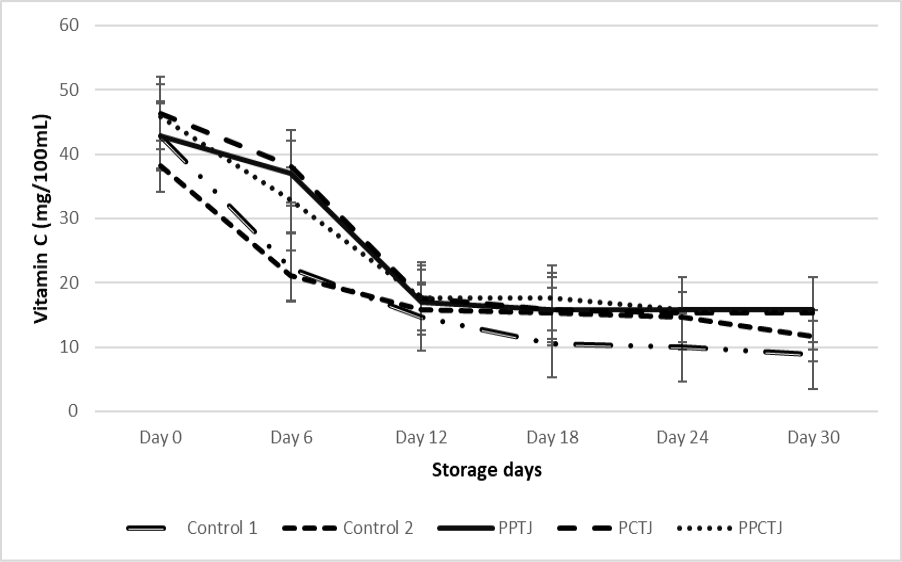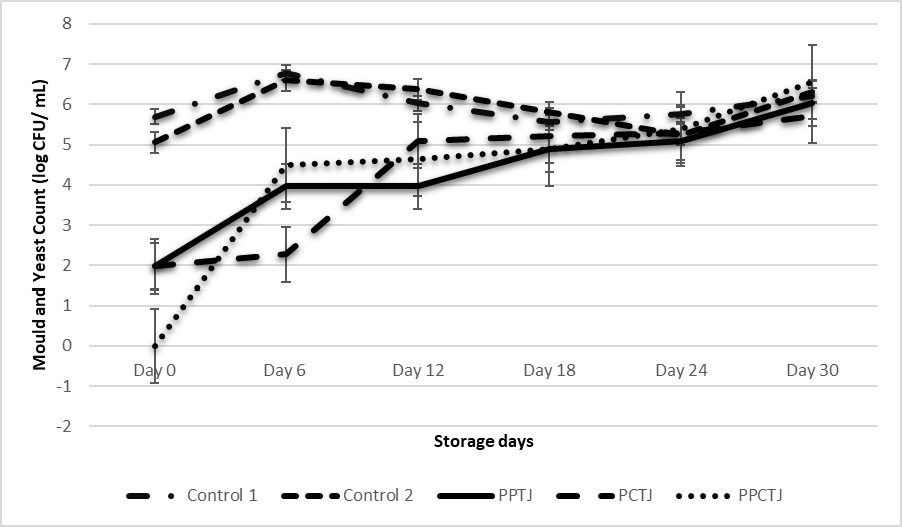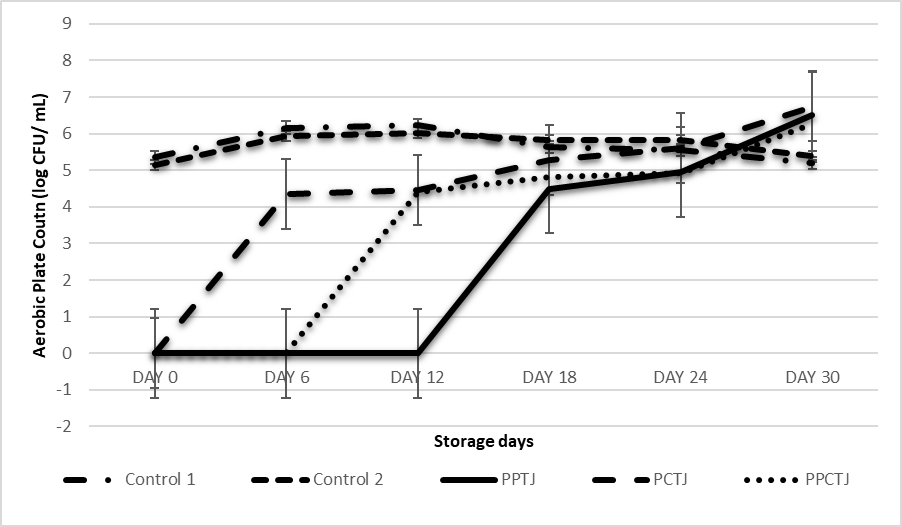Effects of Storage Time on the Chemical and Microbiological Quality of Pasteurized Beetroot (Beta vulgaris L.) Juice with Enzyme Extraction and Clarification
Effects of Storage Time on the Chemical and Microbiological Quality of Pasteurized Beetroot (Beta vulgaris L.) Juice with Enzyme Extraction and Clarification
Abdussalam Muhyideen Zainab Funmilayo and Lee-Hoon Ho*
Effect of storage time on the vitamin C content of beetroot juice during 30 days’ storage period at 4 oC. Control 1: Fresh juice, non-enzyme treated nor pasteurised; Control 2: Pectinase extracted but not pasteurised nor clarified juice; PPTJ: Pasteurised pectinase clarified juice; PCTJ: Pasteurised cellulase clarified juice; PPCTJ: pasteurised pectinase + cellulase clarified juice.
Mould and yeast count of beetroot juice during 30 days’ storage period at 4 oC. Control 1: Fresh juice, non-enzyme treated nor pasteurised; Control 2: Pectinase extracted but not pasteurised nor clarified juice; PPTJ: Pasteurised pectinase clarified juice; PCTJ: Pasteurised cellulase clarified juice; PPCTJ: pasteurised pectinase + cellulase clarified juice.
Aerobic plate count of beetroot juice during 30 days’ storage period at 4 oC. Control 1: Fresh juice, non-enzyme treated nor pasteurised; Control 2: Pectinase extracted but not pasteurised nor clarified juice; PPTJ: Pasteurised pectinase clarified juice; PCTJ: Pasteurised cellulase clarified juice; PPCTJ: pasteurised pectinase + cellulase clarified juice.










